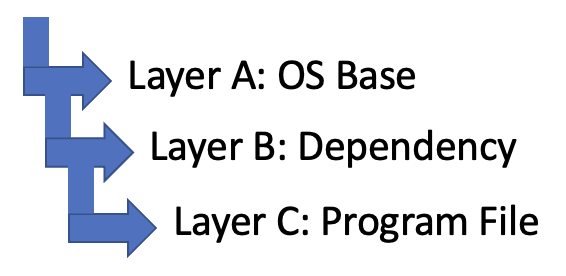
A good way to describe cloud-native environments is to refer to the image of your car.
The container is the engine, k8s is the electronic control unit that manages the proper functioning of the vehicle, the drivers, indicating the route and the destination, select the type of service to be provided.
Today’s article will reveal some architectural details to understand how “the car” manages to reach its destination in an efficient way.
Containers are of two types:
The first is called System Container. It is the bodywork of the car (I mean from the plates to seats, steering wheel, gear lever and accessories).
Often for simplicity of creation, it is a Virtual Machine (VM) with Linux operating system (it can also be Windows).
The most common services present in the VM are ssh , cron and syslog , the File System is of type ext3, ext4, etc.
The second type is called Application Container and is the place where the image will carry out the activities.
Note1: The image is not a single large file. They are usually multiple files which, through an internal cross-pointing system, allow the application to operate correctly.
The Container application (from now on container only), has an operating mode based on a rigid logic, where all levels (layers) have the peculiarity of communicating with each other and are interdependent.
 Figure 1
Figure 1
This approach is very useful as it is able to manage the changes that may occur over time in an effective and hierarchical way.
Let’s take an example: When a service configuration change occurs, for which Layer C is updated, Layer A and B are not affected, which means that they must NOT be modified in turn.
Since Developers like to refine their own images (program files) rather than dependencies, it makes sense to set the service logic in the mode indicated in figure 2 where the dependencies are not affected by a new image.
 Figure 2
Figure 2
Note2 : The File system on which the images are placed (in the example of the car engine we are talking about pistons, connecting rods, shafts …) is mainly of three different types:
- Overlay
- Overlay 2
- AUFS
Note3 : A good advice on the security side is not to build the architecture so that the passwords are contained in the images ( Baked in – Cooked)
One of the splendid innovations introduced in the container world is the management of images:
In a classic high-reliability environment, the application is installed on every single node of the cluster.
In containers, the application is downloaded and deployed only when the workload requires more resources than a new cluster node with a new image.
For this reason, the images are saved in “virtual” warehouses, which can be local or distributed on the internet. They are called “Register Server”.
The most famous are Docker Hub, Google Container Registry, Amazon Elastic Container Registry, Azure Container Registry.
We conclude this article by talking about the management of resources associated with a service.
The container platform uses two features called Cgroup and NameSpace to allocate resources that work at the kernel level.
The purpose of the Cgroup is to assign the correct resources ( CPU & RAM ).
Name spaces have the purpose of grouping the different processes and making sure that they are isolated from each other ( Multitenancy ).
The type of NameSpace can affect all the components of the service as indicated in the list below.
- Cgroup
- PID
- Users
- Mount
- Network
- IPC (Interprocess communication)
- UTS (allows a single system to appear with different host and domain names and with different processes, useful in case of migration)
An example of limiting the resources of an application is shown in Figure 3 where thegable image, downloaded from the Register Server grcgp, has a limit of RAM and CPU resources allocated.
 Figure 3
Figure 3
Soon
